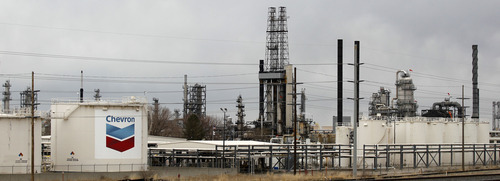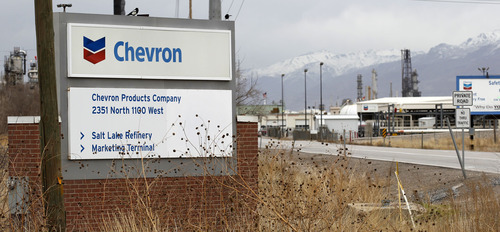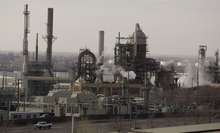This is an archived article that was published on sltrib.com in 2012, and information in the article may be outdated. It is provided only for personal research purposes and may not be reprinted.
Vernal • Utah has four of the nation's 100 largest oil fields, but development of its black wax crude has been slow in coming.
Researchers and government and industry leaders on Thursday discussed technical solutions to problems surrounding the transport of the high paraffinic black wax oil from the Uinta Basin to refineries in the Salt Lake area.
"Five years ago, you could in all fairness have used the term 'intractable' when describing some of the logistical hurdles involved in transporting black wax," said Alan Walker, eastern regional director of Utah Science Technology and Research (USTAR), a state research funding initiative. "Now, we're not only seeing progress, we're also seeing the promise of sustaining or increasing production."
The third annual Black Wax Workshop, sponsored by the Utah Department of Natural Resources, was presented at the Uintah Basin Applied Technology College.
Its focus was the black and yellow wax crude that comes out of the ground at a consistency similar to petroleum jelly. It is thick and viscous — unlike so-called light, sweet crudes that are popular feedstocks for refining and can be transported by pipelines.
By contrast, waxy crudes are trucked by insulated tankers that must arrive at a refinery within four to eight hours or the product will solidify. If that happens, the tanker's cargo must be warmed up before it can be pumped out.
Despite their issues, waxy crude oils have been less expensive per barrel than other light crude oils and produce a high percentage of high-value refined products.
Rob Simmons, USTAR associate director of technology research, said waxy crudes can be put into pipelines but must first be mixed with other petroleum products. Now, advancements in catalytic crackers, which break down large molecules from crude oil into smaller ones, could mean that only a fraction of other products would have to be mixed with waxy crudes for it to be transported.
"Oil prices [have] remained high for a long enough time that investment is flowing into new production," he said. "And better technologies will allow more production with less emissions and less environmental impact — starting with getting oil tankers off the roads."
Earlier this year, Tesoro Corp. and HollyFrontier Corp. announced plans to expand their refineries, increasing capacity to handle Utah waxy crudes — up from 10,000 barrels per day to 21,000 and 24,000 barrels, respectively. Six years ago, HollyFrontier processed 3,000 barrels of Utah waxy crude per day and Tesoro only 500 barrels.
Chevron, which is upgrading its refinery, refuses to release figures on how much Utah waxy crude it can process.
dawn@sltrib.comTwitter@DawnHouseTrib —
Utah's crude oil
Wells • State has four of the nation's 100 largest oil fields, with 3,600 wells, producing 1.2 percent of nation's output.
Rank • Utah is 11th in the nation in production; top states are Texas, Alaska, California, North Dakota and Oklahoma, respectively.
Refinery row • The state's five refineries are in the Salt Lake area, with a capacity of 175,500 barrels of oil per day.
History • Utah Oil Company, founded in 1909, was the state's first commercially successful petroleum company. Its refinery was on a quarter acre north of Salt Lake City and produced seven barrels per day of kerosene, greases and lubricating oils. The facility, now owned by Tesoro, is the state's largest refinery.
Source: Utah Division of Oil, Gas and Mining; UtahRails.net









